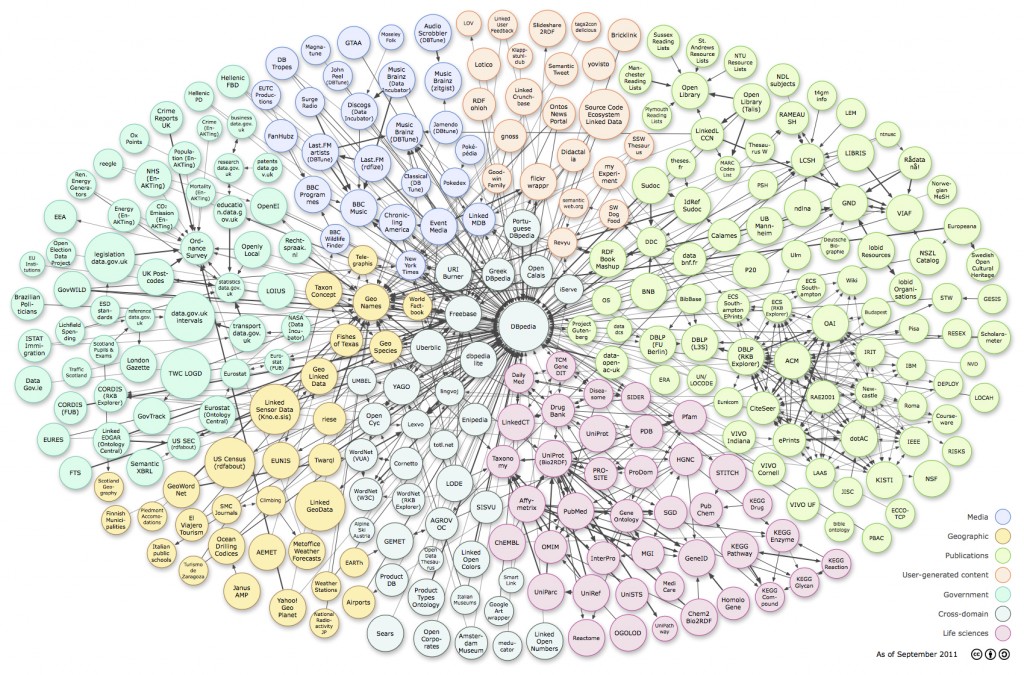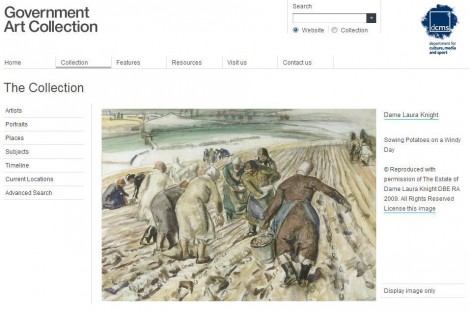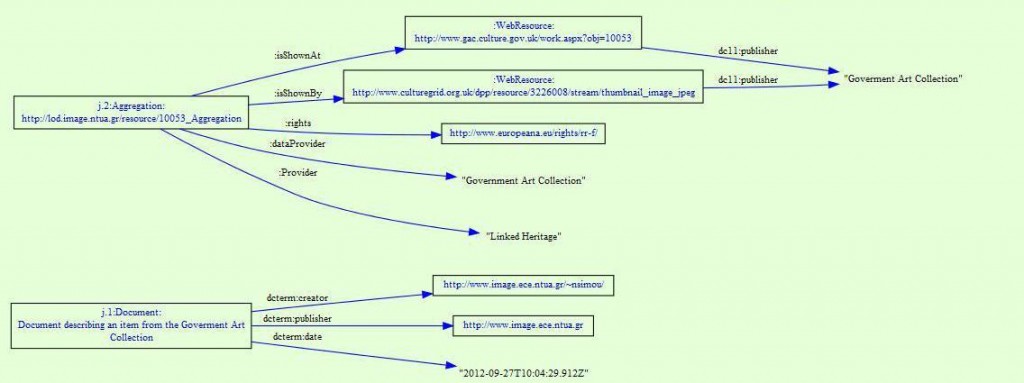|
Digital meets Culture https://www.digitalmeetsculture.net/article/linking-cultural-heritage-information/ Export date: Tue Apr 1 4:29:55 2025 / +0000 GMT |
Linking Cultural Heritage Information Linked data is seen as the enabling technology of the ‘Semantic Web'. Sir Tim Berners-Lee described this not just: “... about putting data on the web. It is about making links, so that a person or machine can explore the web of data. With linked data, when you have some of it, you can find other, related, data.” The Linking Open Data Cloud (2011 version) diagram contains an impressive 311 ‘packages' (collections of triples) of linked data showing the links between them and the sectors they are coming from. The research conducted by Linked Heritage project in to the details of these packages ‘lifted the lid' to find a few significant and interesting facts:
All this led to a set of reccommendations that can be summarised as follows:
All this advice Linked Heritage followed in the Linked data demonstrator. The project was able to publish a limited set of its metadata, initially from the UK Government Art collection and Photo Marburg, and latterly by packages from other partners. In the demonstrator it was possible to enable and illustrate an RDF graph and to enable a search which would not be possible from the original data, for example to carry out a query for artists born in Britain in the UK Government Art Collection (GAC) data. In the GAC data only the name of the artist is given not their country of origin. However by linking to GAC data to DBpedia data it is possible to answer this. Similar queries can also be envisaged, and this is one of the most powerful ‘selling points' for linked data. Contact us to view and try the Linked Data Demonstrator online! |


